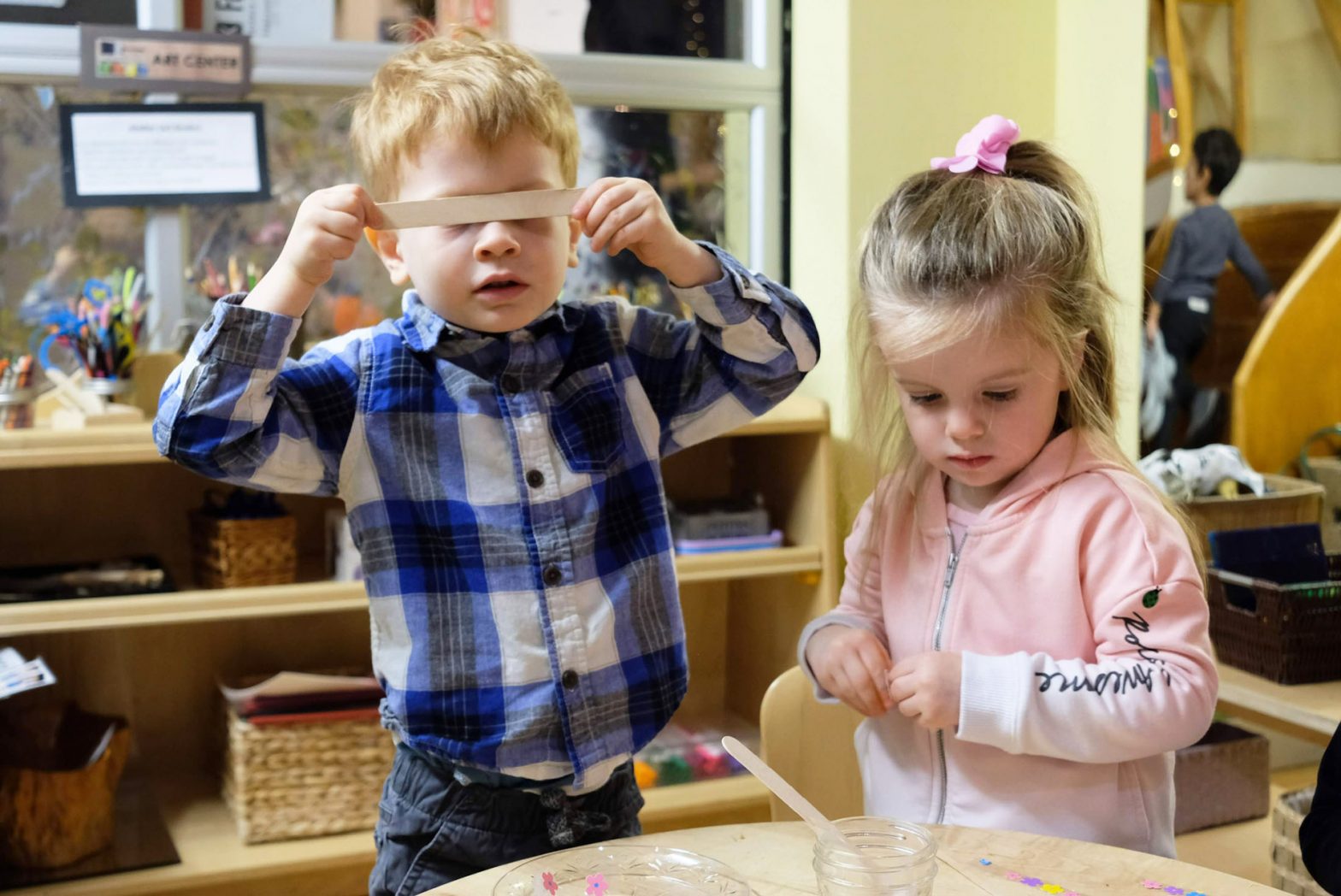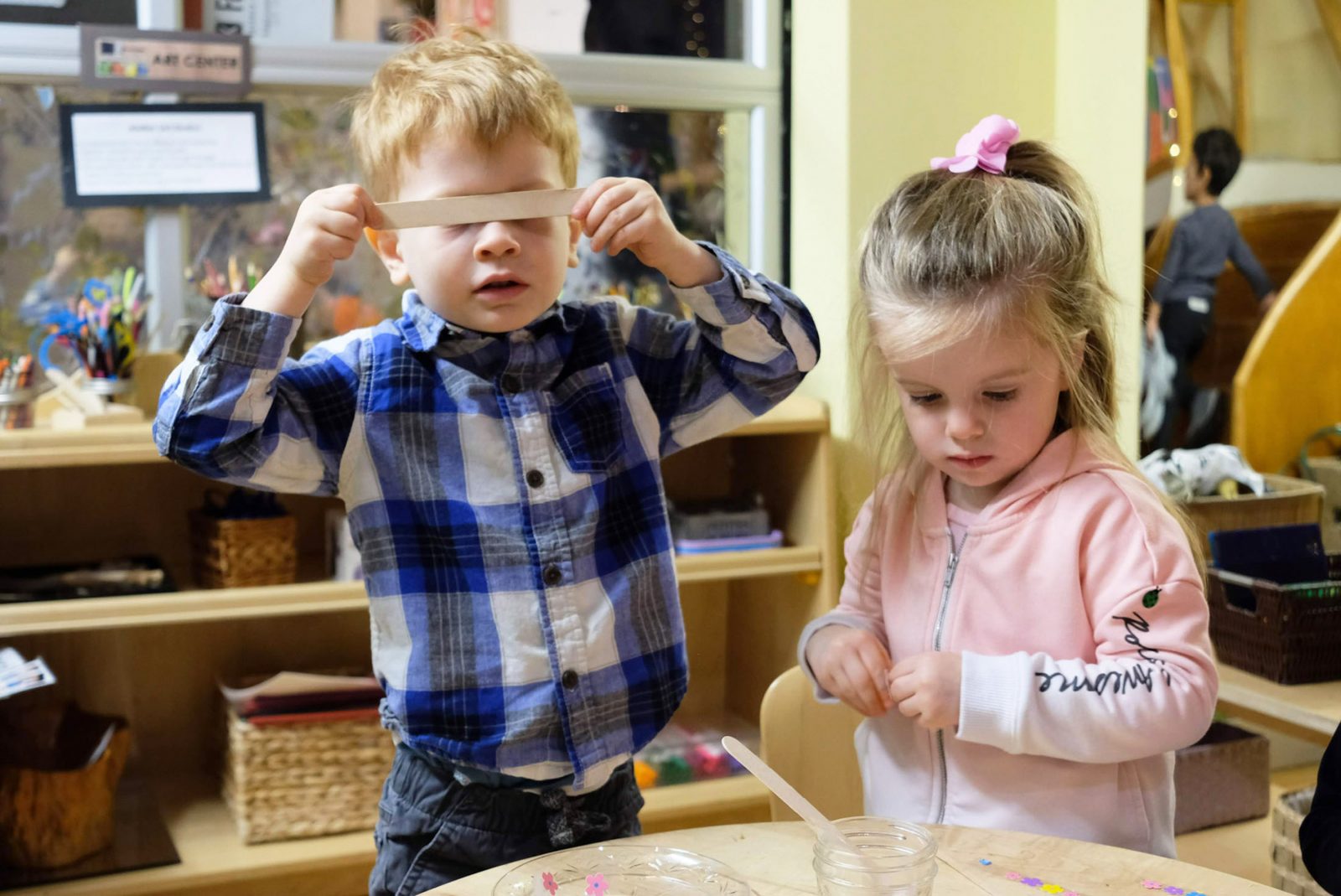“Be careful what you teach. It might interfere with what they are learning.” – Magda Gerber

Parents have often asked me some variation of the question: “How do we strike the right balance between molding our children and trusting them to unfold?” In my view, “molding” should be reserved for ceramics projects and dental work. In parenting, perceiving it our role to mold our kids and direct their development tends to make our experience far less successful and enjoyable. Teaching our children reduces possibilities to discover what they already know. It also risks giving children a you can’t unless I show you message, and with repetition that can become abbreviated in our children’s minds as you can’t.
For example, in the over twenty years that I’ve worked with children and raised my own, it’s become clear that every single one of us is born capable of drawing, painting, creating. While only a percentage might have what may be considered artistic talent, all are capable of using drawing, painting, molding, etc., as expressive, therapeutic tools. But we can easily discourage and limit this ability when we believe it is our job to show kids how it’s done, which children are inclined to perceive as the right way.
In her book It’s Not a Bird Yet: The Drama of Drawing, artist Ursula Kolbe shares why she doesn’t draw for children:
“Young children don’t approach drawing the way adults do, and they use different graphic strategies. Had I drawn a fairy for Louise, I would not have helped her solve a specific graphic problem (and would have denied her the pleasure of solving it herself). When children ask me to draw, say, a fire engine, I have no idea what sort of image they want. If I draw an object in an adult fashion, they can’t use this information to make their own drawings (although they might find watching me entertaining). If I draw in a simple cartoon-like manner, I’d be giving them a formula. This is likely to set them up for failure because it’s difficult to remember a formula invented by another.”
In “The Hidden Meaning of Kids’ Shapes and Scribbles,” Isabel Fattal’s fascinating article in The Atlantic, she describes how psychologists are evolving in their understanding of children’s drawings. Their observations have taught them that rather than aiming for an accurate depiction – which has always been the assumption — a child’s natural process is far more freely expressive, engaged and versatile. Kids draw to have experiences, tell stories and express ideas. Even when they scribble, they are often expressing energy, sound, or motion rather than just moving their arm along the page or making a primitive attempt at something more representative:
“For many kids, drawing is exhilarating not because of the final product it leads to, but because they can live completely in the world of their drawing for a few minutes (and then promptly forget about it a few minutes later). Adults may find it hard to relate to this sort of full-body, fleeting experience. But the opportunities for self-expression that drawing provide have important, even therapeutic, value for kids.”
None of us would wish to rob children of these precious opportunities. They bring joy to our kids and perhaps even more to us as parents. Wyatt shared his experience:
Not drawing for my son was one of the early RIE topics my wife introduced me to three years ago. I was immediately skeptical as I had not read much on RIE and still clung to my own upbringing as the “right” way to raise a child. But after much hard work and modeling on her part I became a convert, thankfully well before our son’s second birthday.
Recently, at our son’s 4-year-old wellness check, the paperwork I was filling out at the doctor’s office asked if my son could draw a person with at least three body parts. I had no idea! He had never chosen to draw one and we had never coached or encouraged him to. I got some paper and a pen, and asked my son if he would like to do some drawing.
He said, “Yes.”
I asked, “Do you think you can draw a person?”
“Yes,” he said, with a smile.
I then sat quietly as he worked. He narrated what he was doing all along the way. “These are feet. And these are legs.” Looking down at his own body, he went back to work.
“This is the belly.” Touching his own body parts and naming them before drawing, he drew his first person ever, complete with eyes, arms and the most beautiful neck this father has ever seen.
 My joy was through the roof. Not at him meeting some medical milestone, or some competitive streak in me that wants my son to excel. But at seeing the satisfaction on my son’s face, being present enough to experience it and the knowledge that everything beautiful about this moment was built on trusting in my son to develop at his own pace, at his own time.
My joy was through the roof. Not at him meeting some medical milestone, or some competitive streak in me that wants my son to excel. But at seeing the satisfaction on my son’s face, being present enough to experience it and the knowledge that everything beautiful about this moment was built on trusting in my son to develop at his own pace, at his own time.Many heartfelt thanks to you, Janet, for helping make this moment a reality. It would not have happened without you.
Ultimately, what may be most revealing about kids’ art isn’t the art itself but what they say during the drawing process. They’re often telling stories that offer a much clearer window into their world than does the final product. – Isabel Fattal, The Atlantic
Do less, observe more, enjoy most! – Magda Gerber


